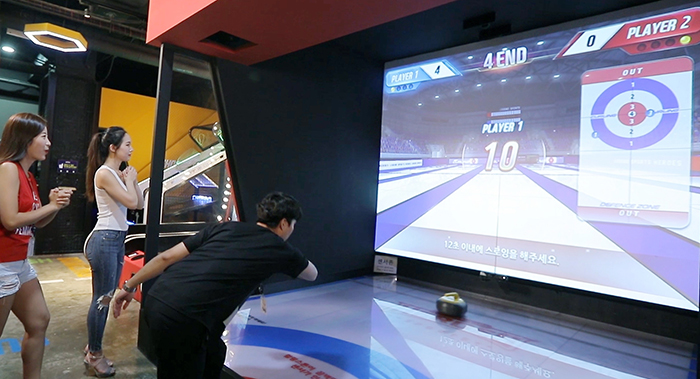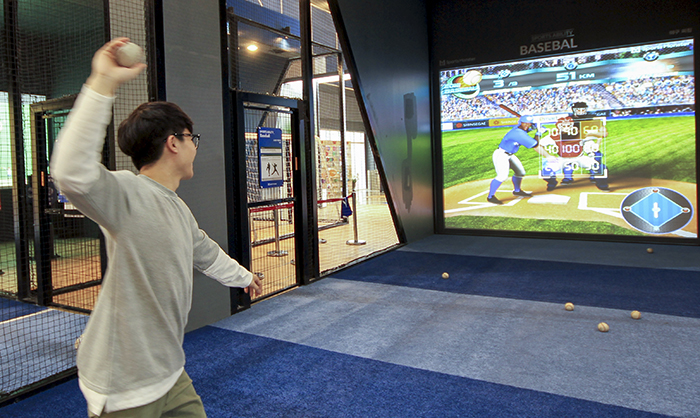
At indoor screen sports centers, people can curl in short sleeves because it doesn’t require any ice. (Legend Heroes Sports)
By Oh Hyun Woo and Park So Young
The usually crowded streets of Gangnam-gu District were quiet on Aug. 28 as there was heavy rain. However, the indoor screen sports centers in the neighborhood were filled with people lining up to enjoy some sports indoors.
Groups of visitors queued to try their hand at curling. When they scanned their card at the kiosk, it automatically reserved their turn. When the player held the handle of the stone and threw it forward, the stone glided on the slippery floor and hit the screen. Then, the stone on the screen started to move. The player then pushed the four buttons on their controller to manipulate the on-screen virtual brooms. Even though the space was tiny and indoors, it was enough to curl.

A digital baseball diamond at an indoor screen sports center utilizes IT and high-tech screens. (Sports Monster)
The indoor screen sports industry in Korea has been growing steadily over the past few years. According to an industry group, the value of the screen sports business in Korea has grown from KRW 1.5 trillion to KRW 5 trillion.
The screen golf business, by itself is worth about KRW 1.2 trillion, around 32 percent of the actual, outdoors golf business in the country, according to the Korea Institute for Industrial Economics & Trade. The value of the screen baseball business is expected to top KRW 1 trillion by 2020.
“Because Korea is very small geographically, there’s not a lot of land to be used for outdoor sports. Actual golf clubs, especially, take up a lot of time and money. In the past, indoor screen sports were considered to be a type of video game, but now, thanks to advanced technology, they feel like the actual sport,” said Kim Min-su, a senior researcher at the Korea Institute of Sport Science. “People are used to indoor entertainment because of noraebang singing rooms and videobang video game cafes, which have prevailed as elements in popular culture.”
“In the past three or four years, the screen sports industry, which started with screen golf, has adopted more than 10 sports into the business,” said Kim Cheol, secretary-general at the Korea Simulation Sports Culture Association. “The industry will grow further with the advancement of technology.”
As indoor screen sports start to draw interest across Korea, especially among people in their 20s and 30s, it could soon become a must-try item for tourists visiting Korea who are looking for a unique experience.
hyunw54@korea.kr